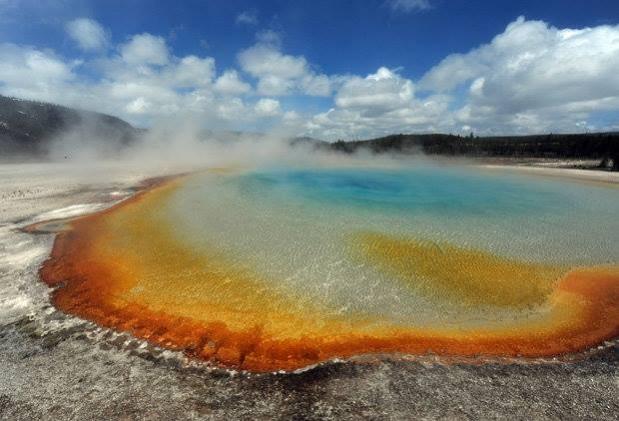
More than 200 earthquake tremors have been detected at the Yellowstone supervolcano in the last 10 days, the US Geological Survey (USGS) has revealed. But the USGS stated that there is no need to worry about these quakes as these tremors are very weak and will not lead to volcanic eruptions.
The latest swarm of these earthquakes began in a region located around eight miles northeast of West Yellowstone, Montana, on February 8. A drastic spike in the number of quakes was observed since February 15.
"Over the past several days, an earthquake swarm has been ongoing at Yellowstone," USGS wrote in a statement.
"Keep in mind that swarms like this account for more than 50 percent of the seismic activity at Yellowstone and no volcanic activity has occurred from any past such events. As of the night of February 18, over 200 earthquakes have been located in an area 13 km (8 miles) North East of West Yellowstone, Montana," the statement added.
Many more earthquakes of lower frequencies have occurred but they were apparently too small to be located.
The region where the earthquakes occurred is almost the same place where the Maple Creek swarm occurred last year, it included around 2,400 earthquakes over a span of four months — from June to September.
The new earthquakes were recorded just southeast of the location of the 2017 Maple Creek swarm, about 13 km NE of West Yellowstone, MT, USGS revealed.
It's being speculated that the current swarm might just be a continuation of the Maple Creek swarm.
"In fact, the current swarm may be just a continuation of the Maple Creek swarm, given the ongoing but sporadic seismicity in the area over the past several months," said the USGS in a statement.
"On February 15, seismicity rates and magnitudes increased markedly. As of the night of February 18, the largest earthquake in the swarm is 2.9 magnitude, and none of the events have been felt. All are occurring about 8 km (5 miles) beneath the surface.
"The current and past earthquake swarms reflect the geology of the region, which contains numerous faults, as well as fluids that are constantly in motion beneath the surface," the USGS said.
"This combination of existing faults and fluid migration, plus the fact that the region is probably still 'feeling' the stress effects of the 1959 earthquake, contribute to making this area a hotbed of seismicity and swarm activity."
Though the region is being hit by many quakes, the seismic activity there is quite weak, said the USGS, possibly with an aim to calm fears.
"While it may seem worrisome, the current seismicity is relatively weak and actually represents an opportunity to learn more about Yellowstone. It is during periods of change when scientists can develop, test, and refine their models of how the Yellowstone volcanic system works," it said.
"Past seismic swarms like those of 2004, 2009, and 2010, have led to new insights into the behavior of the caldera system. We hope to expand this knowledge through future analyses of the 2017 and 2018 seismicity."
The Yellowstone supervolcano is an ancient active volcano that erupts every 600,000 years. It completed its last eruption 600,000 years ago and is known for features like 10,000 hot springs, geysers, mud pots and terraces, including the cone geyser named Old Faithful.














